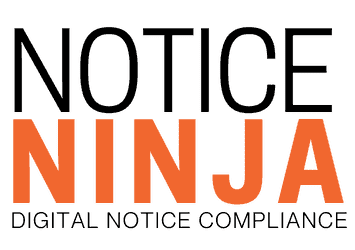Yes, NOTICENINJA is corporate tax notice compliance software that automates key workflows including notice assignments. The platform employs a rule-based system that can manage multiple level rules and ensure notices are directed to the appropriate stakeholder. As a result, you’ll never have to worry about notices being misdirected or slipping between the cracks.

What Filing Return Trends Reveal About Tax Operations Right Now

14 October
At Notice Ninja, we process and analyze thousands of tax notice workflows across a diverse set of industries: insurance, private equity, banks, healthcare services, HR Software, entertainment and telecommunications companies to name a few. As we compare data from 2024 to the first ten months of 2025, one classification has emerged with significant movement: Filing Return workflows. These workflows include initial filings, amended returns, and late filings. Each one is a signal of operational load, compliance risk, or upstream process gaps that tax departments need to stay ahead of.
Filing Return workflows have now overtaken other traditionally high-volume categories such as Claim and Account. While still significant, those workflows have decreased in frequency this year.
Key 2024–2025 Workflow Trends Across the Client Base
Our analysis of year-over-year trends reveals several workflow categories that are either accelerating in volume or showing signs of operational improvement across Notice Ninja’s client base. These trends offer benchmarks that tax leaders can use to assess their own team’s performance, identify workload shifts, and anticipate agency activity.
Top Increasing Workflows:
-
Agency Communication: Up 36% in 2025 compared to 2024. This spike reflects greater correspondence between employers and federal/state agencies. It could indicate more follow-up requests, clarification demands, or notice escalations as agencies tighten enforcement during the shutdown.
-
Amount Due: Up 7%. This suggests an uptick in tax assessments, late notices, and outstanding balances. It may point to breakdowns in reconciliation, delayed payments, or processing gaps that require closer review.
-
Audit: Modest increase of 6%. While smaller in volume, this is a critical signal. More audit-related workflows mean tax teams must remain ready with documentation, filing timelines, and clear resolution histories.
Top Decreasing Workflows:
-
Account: Down 14%. This could reflect increased automation of setup, closure, or access changes across tax accounts and jurisdictions. It may also signal fewer new entity registrations or cleaner agency integrations.
-
Claim: Down 43%. This drop may relate to fewer unemployment insurance claims, garnishment releases, or child support filings. Teams should verify whether this decline is due to resolution efficiency or a shift in underlying filing obligations.
These directional changes aren’t just statistics — they’re operational signals. If your team is seeing trends that differ significantly from these benchmarks, it may be time to reassess processes, visibility, or workload alignment.
To provide context, these are internal workflow classifications within the NOTICENINJA platform. 'Account' workflows refer to the lifecycle and structure of employer tax accounts, including EIN registrations, account access and authorization, business license management, reorganizations, and agency-linked updates. These workflows often signal structural tax profile changes, such as mergers, account closures, or jurisdictional expansions.
'Claim' workflows are typically tied to state employment tax processes and support obligations. They include unemployment insurance claims, benefit charge statements, wage garnishment notices, income withholding for child support, and similar filings from departments like the California EDD, Vermont Department of Labor, and others. While they may appear procedural, these workflows often have downstream impacts on payroll reconciliation, employee status management, and agency correspondence. A decrease or spike in these can directly reflect regulatory activity and employer compliance responsibilities. Their rise also correlates with increases in Amount Due and Agency Communication workflows. This pattern suggests a more active posture from tax authorities and a greater need for internal alignment around filing responsibilities. When Filing Return volume increases, it is often accompanied by additional compliance demands.
For VPs of Tax and senior compliance leaders, these shifts offer both a warning and an opportunity. Tax operations are being asked to do more, faster, and with fewer errors. Filing returns is no longer a back-office function. It is a risk trigger, a potential bottleneck, and an early warning system for deeper problems in upstream systems like payroll or ERP integrations.
The Strategic Importance of Filing Workflows
Our client data shows that Filing Return workflows have become a leading contributor to operational load.
This reflects a few key realities:
- More frequent and complex filings across jurisdictions.
- Increased audits and amended filings post-agency communication.
- A need for real-time coordination between tax, payroll, and compliance teams.
The complexity isn’t limited to high-volume companies. Even mid-sized organizations operating across just five to ten states are seeing the challenges of meeting local filing requirements, dealing with mismatches, and responding to agency notices.
Filing Return workflows are the smoke that signals a fire in your tax operations. The earlier these workflows spike, the more likely your team is facing disjointed processes or recurring compliance gaps that need to be addressed immediately.
A managing director at a major private equity firm recently put it this way: “I want to see the trends across your client base. That way I can say, based on what Notice Ninja sees, let’s fix our procedures or implement something better.”
That sentiment echoes what we hear consistently. Operations leaders are looking for ways to benchmark their internal performance against the broader market. They want to know how long it typically takes to resolve a filing notice in California, how quickly refund checks expire in Massachusetts, and how often amended returns are triggering follow-up communications in Texas.
Like airport traffic control, filing workflows help you track incoming issues before they cause runway pileups. The key is visibility, sequencing, and priority handling — something manual tools simply can't provide at scale.
Benchmarking Tax Filing Workflows Across Clients
Unlike advisory firms that publish point-in-time surveys, NOTICENINJA maintains a living dataset.
This gives us insight into:
- The average response time by state for filing-related notices.
- Volume trends by entity type and jurisdiction.
- Frequency of follow-up notices and time-to-resolution.
We also track metrics that inform the decision-making process for resource allocation. For example, response times in Florida for follow-up notices are trending shorter in 2025 than in 2024. This suggests either faster agency cycles or improved client-side processing, both of which matter to planning cycles. In contrast, time-to-levy indicators in states like Illinois and New Jersey have shortened, meaning tax teams have less room for delayed action.
With the current government shutdown casting uncertainty over IRS responsiveness and state agency operations, these trends become even more critical. Our platform allows tax teams to stay informed, prioritize their work, and make data-driven improvements. Filing Return workflows are no longer a routine back-office task. They are a real-time indicator of compliance health.
How NOTICENINJA Supports These Trends
Our system of record is designed specifically for tax operations teams. It centralizes filing and notice activity, automates tracking and response workflows, and delivers timely alerts when deadlines or follow-ups are at risk. The Filing Return workflow structure integrates seamlessly with document repositories, POA tracking, and amended return templates to ensure your team can manage every step with consistency.
This is not a CRM retrofit or a document storage solution. It is purpose-built to manage the lifecycle of tax notices, from filings and POAs to refund tracking and audit prep.
How This Data Drives Operational Change
NOTICENINJA’s dataset doesn’t just report what’s happening — it reveals where procedures can be tightened, automated, or improved. When clients see trends like increases in Filing Return or follow-up notices by state, they can use that intelligence to adjust their operations in meaningful ways.
For example:
-
Fix workflow delays: Filing Return and Agency Communication workflows often uncover lag in routing or response. With NOTICENINJA’s automation and rule-based workflows, teams can eliminate handoff delays and reduce resolution time.
-
Improve SOPs: Seeing a rise in California follow-up notices? Teams use NOTICENINJA’s workflow templates to standardize procedures with state-specific checklists, minimizing repeat errors.
-
Reduce rework: If Filing Return increases correlate with more Amount Due workflows, that points to reconciliation or filing issues. Teams embed additional review steps into the Filing Return process to reduce amended returns.
-
Align resources: When Claim workflows decline and Filing workflows spike, teams reassign bandwidth in the platform — giving more attention to active pressure points.
-
Benchmark performance: Comparing resolution times across jurisdictions helps teams understand how they stack up. If they're slower than the platform average, they can diagnose and address root causes with data-backed decisions.
These aren’t theoretical fixes. Clients are using NOTICENINJA’s workflow-level intelligence to build smarter, more responsive tax operations — and to lead internal improvements with real data.
If your team is seeing an uptick in filings, you’re not alone. But you also don’t have to manage it in a vacuum.
Use these insights to:
- Reassess your filing SOPs.
- Evaluate automation opportunities.
- Benchmark your time-to-resolution across states.
- Prepare for additional agency scrutiny and follow-ups.
We will continue to publish insights based on our platform data, helping tax leaders make smarter decisions under pressure.
Coming Soon: 2024–2025 Metrics Report
We are compiling a comprehensive trends and metrics report based on our Dojo data across all client workflows. This resource will break down Filing Return, Audit, Refund, and POA workflow trends, time-to-resolution benchmarks by state, and year-over-year changes across classifications. This report will be released in Q1, 2026 and available to all clients and subscribers.
Let us show you where your team stands and how you can improve. Contact us to schedule a workflow performance assessment.
RELATED POSTS
- Form 941 Filing Is Costing You More Than You Think
- Effortless Data Management: Introducing Batch Processing in NOTICENINJA
- Cut Annual Refund Reconciliation Time via Automated Offset Matching
